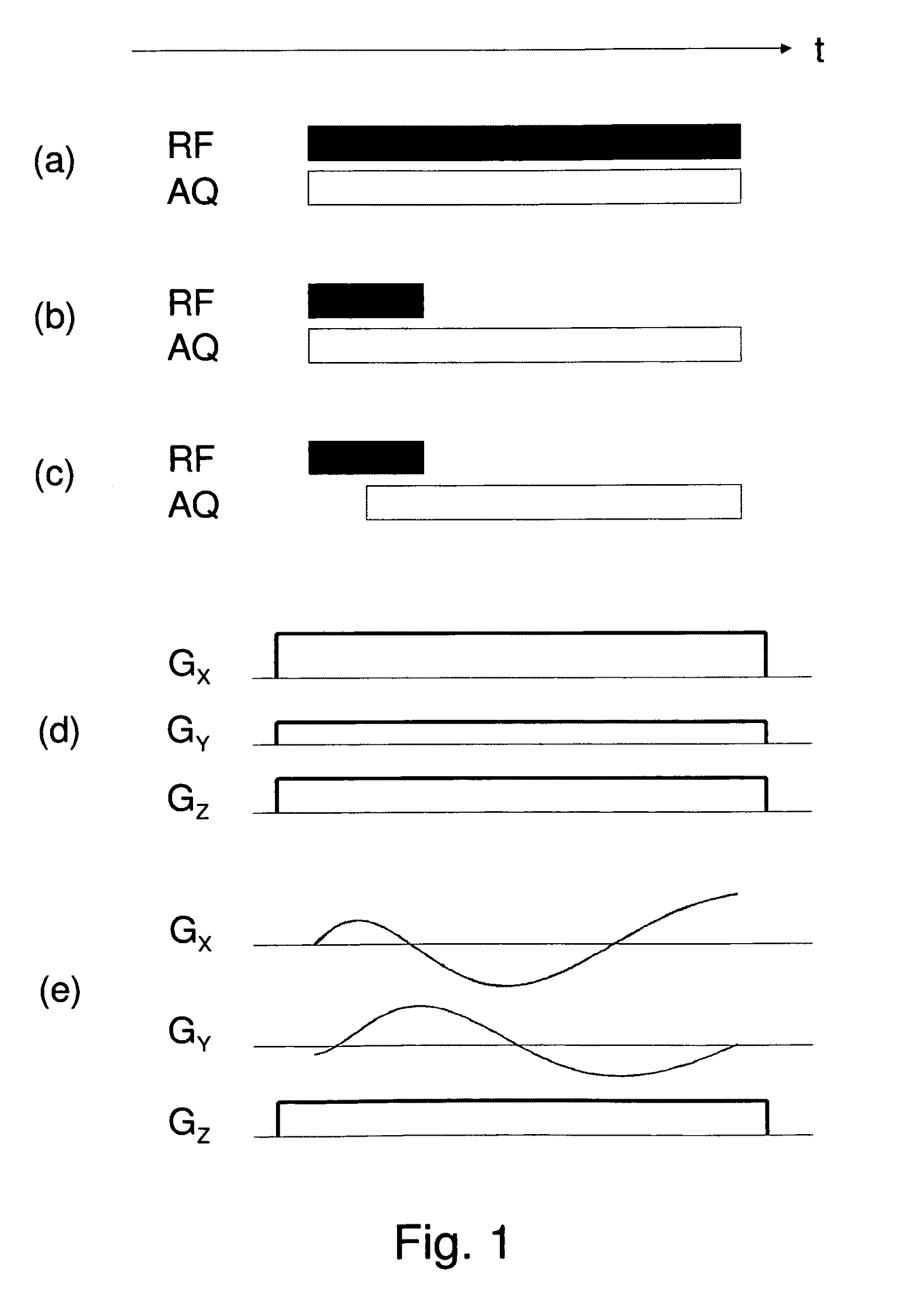Simultaneous excitation and acquisition in magnetic resonance
a magnetic resonance and simultaneous excitation technology, applied in the field of magnetic resonance spectroscopy (= mrs) or magnetic resonance imaging (= mri), can solve the problems of inability or optimal reconstruction of image or spectrum through fourier transform, and achieve the effect of reducing the amount of data needed, avoiding image intensity variations, and reducing measurement tim
- Summary
- Abstract
- Description
- Claims
- Application Information
AI Technical Summary
Benefits of technology
Problems solved by technology
Method used
Image
Examples
Embodiment Construction
[0040]A method of magnetic resonance is provided. More specifically, a method of magnetic resonance wherein spin excitation is applied over an extended period, data acquisition is performed during or during and after the excitation, and reconstruction of the spectrum or image is obtained by inversion of the forward description of the encoding procedure.
Spin Excitation Over an Extended Period
[0041]According to the invention, a MR method is provided wherein spin excitation is applied over an extended period. The duration of the RF excitation pulse tp is considered with respect to the dwell time dw of the MR experiment which is the inverse of the nominal frequency bandwidth bw, i.e. dw=1 / bw. The nominal bandwidth is the frequency range of interest spanned either by the resonances of a sample in MRS or by a spatially dependent field, very often a field gradient, in MRI. Hence, an extended excitation pulse is defined as an RF pulse whose duration is larger than the inverse of this nomina...
PUM
 Login to View More
Login to View More Abstract
Description
Claims
Application Information
 Login to View More
Login to View More - R&D
- Intellectual Property
- Life Sciences
- Materials
- Tech Scout
- Unparalleled Data Quality
- Higher Quality Content
- 60% Fewer Hallucinations
Browse by: Latest US Patents, China's latest patents, Technical Efficacy Thesaurus, Application Domain, Technology Topic, Popular Technical Reports.
© 2025 PatSnap. All rights reserved.Legal|Privacy policy|Modern Slavery Act Transparency Statement|Sitemap|About US| Contact US: help@patsnap.com



